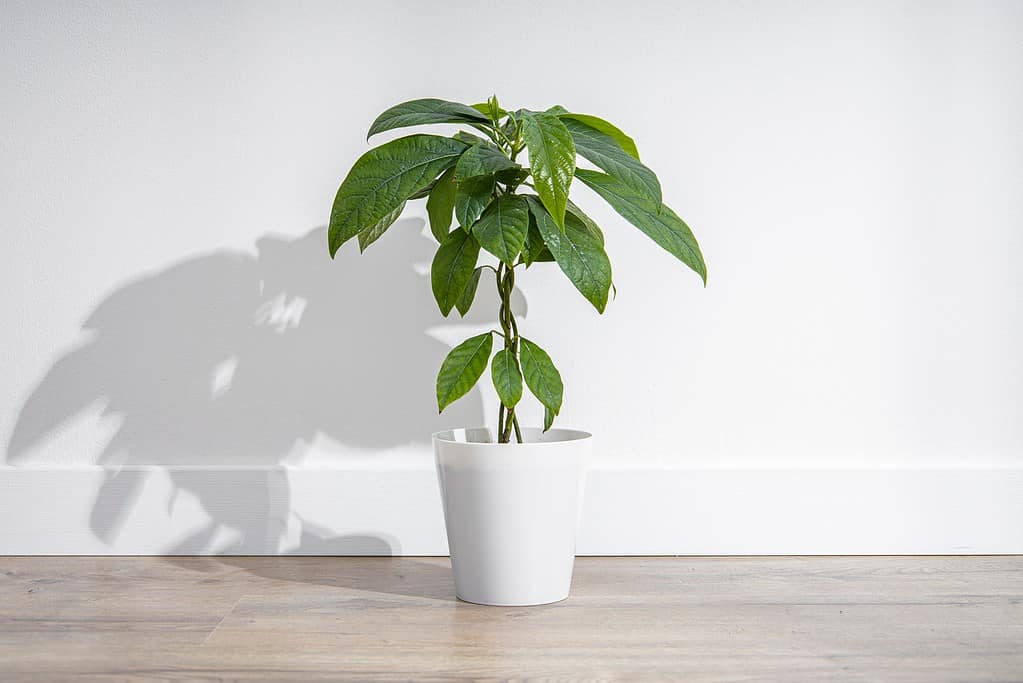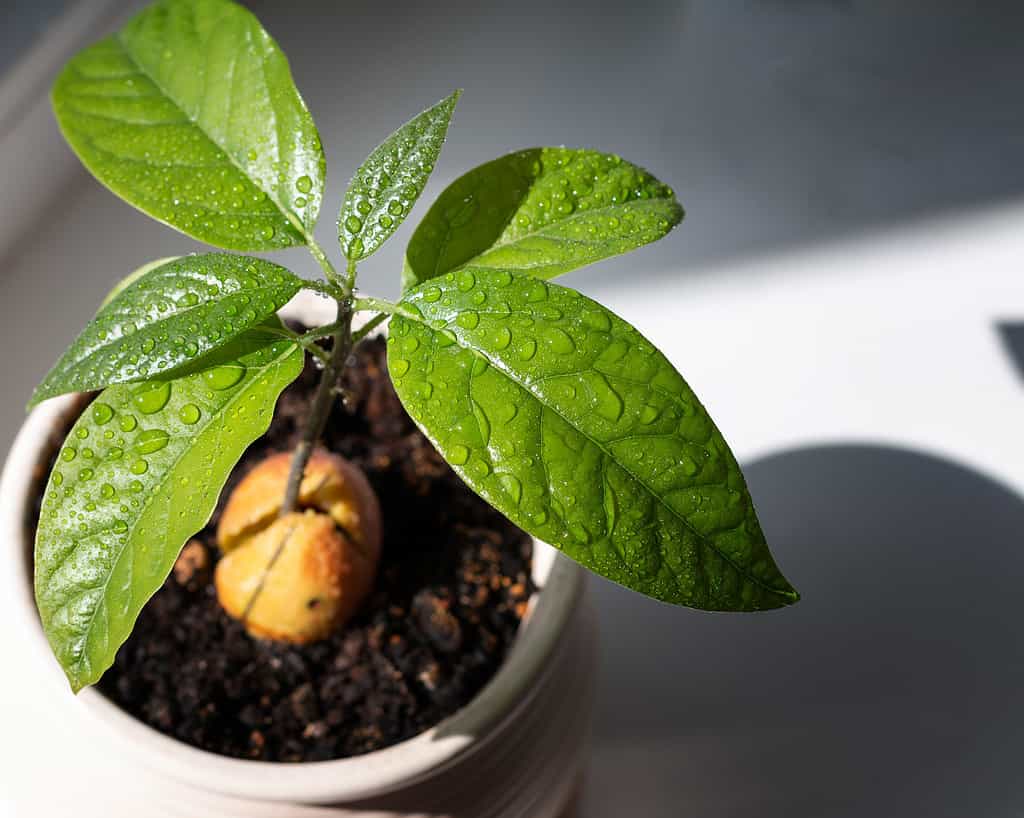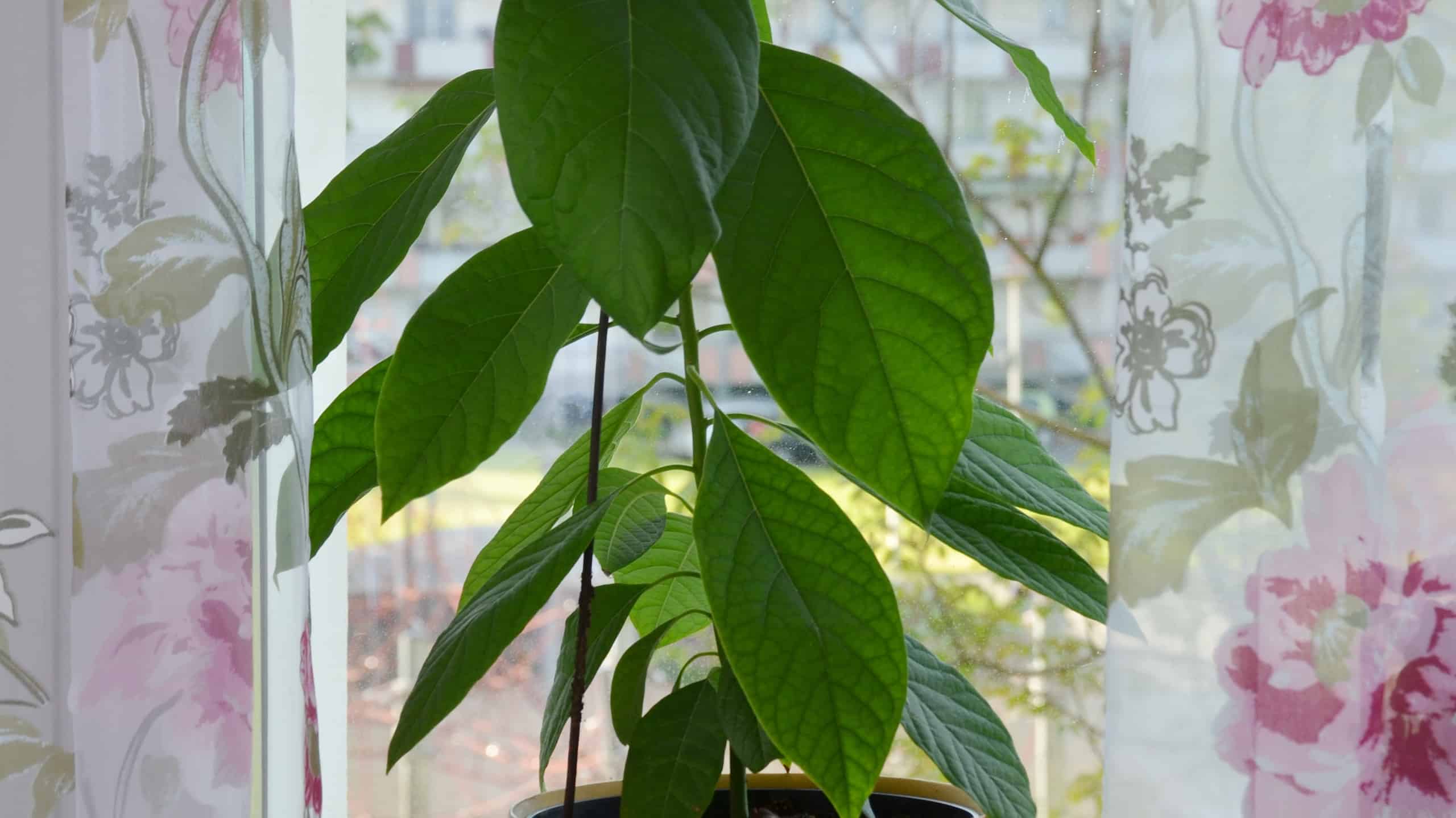Have you ever tried to grow a fruit tree from a seed you get from grocery store produce? It sadly doesn’t always produce fruit. Still, these seeds can grow into lovely trees. A common grocery store fruit is the avocado. They are delicious, and buttery, but can be difficult to grow from seed. While not as easy as growing an avocado tree outside, you can grow these delicious foods indoors. But how? Follow along to learn how to grow avocados indoors and the common problems they face.
Can you Grow Avocados Indoors?
So, can you grow avocados indoors? The short answer is yes, you can grow avocados indoors. However, not a lot of gardeners recommend this method unless you’re just germinating the seed or planting a dwarf variety. Although they are tricky to grow indoors, they make excellent and eye-catching houseplants, even without fruit. The difficulty of growing these trees is that they can grow up to 35 feet tall. Unless you have an amazingly high ceiling, it’ll be hard to keep this plant inside. However, avocado dwarf varieties are about 4 to 10 feet tall.

You can grow avocados indoors, but it takes time, patience, and the right environment.
©Alex SG/Shutterstock.com
How Long Does it Take for an Avocado Tree to Grow?
Avocado trees are fast growers, but this doesn’t mean they fruit quickly. An avocado tree can reach up to 20 feet tall in three years, but take 4 to 15 years to produce fruits. Avocado trees bear fruit later when grown from seed. However, young grafted avocado trees mainly fruit are 3 to 4 years.
How to Grow Avocados Indoor
There are two main methods of growing avocados. You can either grow from seed or purchase a young but established grafted avocado tree. In this article, we are going to dive into how to grow an avocado tree indoors from seed in five steps.

Avocado trees can take up to 15 years to fruit.
©Chalysheva Ekaterina/Shutterstock.com
Step 1: Germinate Seed or Find Dwarf Seedling
The first step of growing avocados indoors is to germinate the seed. You can purchase a seed from a gardening store or seed distributor or take one from a grocery store avocado. However, it’s important to note that not all seeds bear fruit. Most avocados you see in groceries were produced from grafted avocado trees.
To start, gather your materials. It’s best to use a clear mason jar to see your plant’s rooting progress. You can also use a transparent plastic cup. You’ll also need water, toothpicks, and an avocado seed. Dry the pit/seed before starting to ensure that the seed doesn’t grow mold from leftover residue.
Fill the cup or jar with enough water so that if you dangle the seed gently, the bottom is underwater. Then, take the toothpicks and find the ‘bottom’ of the pit. The bottom of the pit is slightly flat. This is where the roots emerge. Press three to four toothpicks into the pit, so that it’s held up above the mason jar. You don’t want to drown the seed.
Afterward, place the seed with the toothpicks in the jar and relocate it to a sunny and bright spot. It typically thrives in a bright window, but you can also use grow lights if your home doesn’t have enough light. After this, all that’s left to do is wait. It can take avocado seeds 3 weeks to 2 months to root and sprout. When the seedling is about 6 inches tall, you can transplant it into a container with soil.

Avocado seeds have a top and a bottom. The bottom produces roots while the top sprouts.
©Olya Detry/Shutterstock.com
Step 2: Set up the Container
The first step is always the hardest. During the second step, you’ll set up your plant’s container. Choose a large enough container for your avocado plant to stretch its roots. The material of the container doesn’t matter, although some gardening experts recommend choosing a deep ceramic pot. You can also use a fabric grow bag. Avocado trees also need well-draining soil, although they aren’t picky about the type. For this tree, you can use sandy and slightly acidic soil that drains well. Heavy soil can trap water, drowning your plant’s roots.
Step 3: Water Regularly and Place in a Bright Location
The third step is to water your avocado tree as needed. Avocado trees need bright light and plenty of water. The exact amount and frequency of water though depends on your plant’s growing stage. In the beginning, when first transplanted, avocado trees need frequent watering so the roots grow. However, mature plants older than a year only need about 2 inches of water during summer, sometimes less or more. This also depends on location. Avocado trees inside may not receive as much sun or light as a tree outside. It’s also best to place your avocado tree in a warm spot where temperatures range from 60°F to 85°F.

Mature avocado trees need about 2 inches of water per week during summer.
©iStock.com/Tgordievskaya
Step 4: Fertilize and Transplant as Needed
Although fertilizer isn’t always necessary, using some can help your avocado tree flower and bear fruit. If you choose to use fertilizer on your avocado tree, choose one with high amounts of nitrogen and some zinc. Generally, you can use any citrus tree fertilizer on your tree in summer and spring to promote new growth and flowers.
So, what about transplanting? Avocado trees are fast growers, although indoors they typically don’t reach over 10 feet tall. Still, if you notice that your tree’s growth is slowing or if the roots are coming out of the drainage holes, it’s time to choose a larger container and transplant the tree. Carefully take the tree out of the pot, without yanking the roots roughly. You can flip the tree to make it easier as sometimes when compact, it slides smoothly out of the container. Loosen the roots and dirt by lightly shaking them. Then, use the same soil, and new soil to add a light layer at the bottom of the larger container. Place the tree into the container and cover it with a mixture of new and old soil. Water generously and place it back in a bright spot.
Step 5: Harvest
If you’re patient and lucky enough, your avocado tree will flower and bear fruit. Avocado trees produce bright yellow and green flowers. They may flower in spring or summer, depending on the light conditions.
Harvesting avocados is easy. You don’t have to wait for avocados to ripen on the tree. Mature avocados are easy to spot as they change. For instance, some dark avocado varieties darken, while green avocados may develop yellow spots. To avoid bruising your avocados, clip the stem instead of yanking or tugging the fruit down.

Common Avocado Tree Growing Problems
Avocado trees are great for gardeners with patience as they take a long time to flower and bear fruit. Although relatively sturdy, these plants also run into problems like root rot, root-bound containers, and Verticillium wilt. If you’re growing your avocado tree indoors, your plant may develop diseases, but not attract pests.
So, what is root rot? Root rot occurs when a plant’s roots are submerged in water and have no room to breathe. They begin rotting, which can cause avocado tree leaves to wilt and yellow. Sometimes, the stem develops fungus or darkens. This is a common problem and happens with overwatering. Sometimes, the type of container plays a role. Not all containers have drainage holes and may trap water inside of the pot.
Another problem avocado trees face while growing indoors is developing stress from being root-bound. This is when the roots run out of space to grow and burst out of the drainage holes or wrap around each other.
Verticillium wilt is a common fungal disease that affects most fruiting plants. This can cause your entire tree or multiple branches to suddenly wilt and die. The leaves though don’t always fall out and there are few solutions. It’s often fatal, but some plants may bounce back. According to the University of California Agriculture and Natural Resources, there is no cure. Even trees that bounce back and produce new shoots are still infected.
Thank you for reading! Have some feedback for us? Contact the AZ Animals editorial team.








